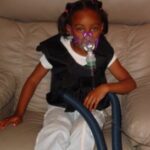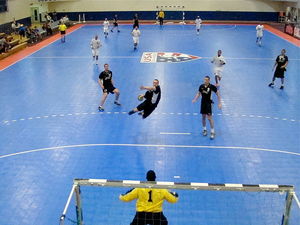Cystic Fibrosis is an inherited condition in which a defective gene disrupts the normal production of mucus, causing it to become thick and sticky. As the mucus cannot move properly, it begins to build up in the body and form obstructions in areas such as the lungs and pancreas. The result is often severe lung damage, digestive problems and malnutrition.
Cystic fibrosis is found in over 70,000 children and adults worldwide, with an additional 1,000 new cases being diagnosed each year in the United States alone. More than 70% of cystic fibrosis patients are diagnosed by age two, as there are several common signs and symptoms that are often displayed early in childhood.
Common Signs and Symptoms of Cystic Fibrosis: Salty Sweat
One of the most common signs first noticed by parents is a strong taste of salt when kissing their child. This is due to the fact the defective gene involved with cystic fibrosis changes the way sodium chloride (salt) is moved in and out of cells. As a result, the body loses higher than normal amounts of salt as it sweats.
If a child becomes overly warm and produces a lot of sweat, parents may notice signs of salt loss, such as dehydration, weakness, or tiredness.
Common Signs and Symptoms of Cystic Fibrosis: Breathing Difficulties
The genetic mutation in cystic fibrosis causes the normally thin and watery mucus in the body to become thick and sticky. As it builds up in the respiratory airways, breathing becomes more difficult. Parents may observe their child wheezing, acting short of breath, or coughing a lot. Thick sputum is sometimes brought up while coughing, though parents may not notice this in young children who have a tendency to swallow instead of spitting it out.
Common Signs and Symptoms of Cystic Fibrosis: Frequent Respiratory Infections
People with cystic fibrosis are prone to frequent respiratory infections, as their blocked airways are prime breeding ground for bacteria. These respiratory infections take the form of sinus infections, bronchitis, pneumonia, or lung infections caused by unusual strains of bacteria.
Frequent respiratory infections may be the sign that draws the attention of a doctor when other symptoms of cystic fibrosis are not extremely obvious or present.
Common Signs and Symptoms of Cystic Fibrosis: Digestive and Bowel Problems
The thick, sticky mucus found in cystic fibrosis commonly blocks the ducts of the pancreas. This results in the digestive enzymes produced by the pancreas not reaching the small intestines, where they are needed to break down food. People with cystic fibrosis commonly have bulky, greasy, and foul-smelling stools because of this. They may also experience on-going diarrhea, constipation, painful gas, or intestinal blockages.
An intestinal blockage is the earliest sign of cystic fibrosis in babies. Fifteen-20% of newborns with cystic fibrosis have meconium ileus, which is an obstruction of the intestines due to the meconium being overly thick. Meconium is the dark sticky stuff (made up of amniotic fluid, mucus, and bile) that is found in the intestine at birth and passed out of the system in the baby’s first bowel movement. The body uses the pancreatic digestive enzymes to break down meconium, but these may not be readily available in babies with cystic fibrosis.
Common Signs and Symptoms of Cystic Fibrosis: Poor Growth and Weight Gain
Without the help of the pancreatic enzymes, the body cannot absorb proteins and fats properly. Children with cystic fibrosis often become malnourished because they cannot pull the required nutrients out of their food. Babies may have ravenous appetites, yet not put on weight or show proper growth during the first few weeks of their life. Older children frequently fall below the height and weight expectations for their age. They may also show signs of poor bone development and low bone density.
A Note on the Signs and Symptoms of Cystic Fibrosis
There are more than 1,400 possible ways for the gene involved with cystic fibrosis to mutate, with each mutation causing a slightly different set of symptoms to be displayed. This means one child may have several symptoms, while another will experience only one or two. Signs of cystic fibrosis may show right away in one child, while another will appear to be fine for a while. The severity of symptoms may change over time and with age, as well.
Sources:
Cystic Fibrosis Foundation:
What You Need to Know
Frequently Asked Questions
National Heart Lung and Blood Institute:
What Are the Signs and Symptoms of Cystic Fibrosis?
Mayo Clinic:
Cystic Fibrosis: Causes
Cystic Fibrosis: Symptoms
MedicineNet:
Cystic Fibrosis – What is cystic fibrosis?
What are the signs and symptoms of cystic fibrosis?
Baby Center:
Cystic Fibrosis



